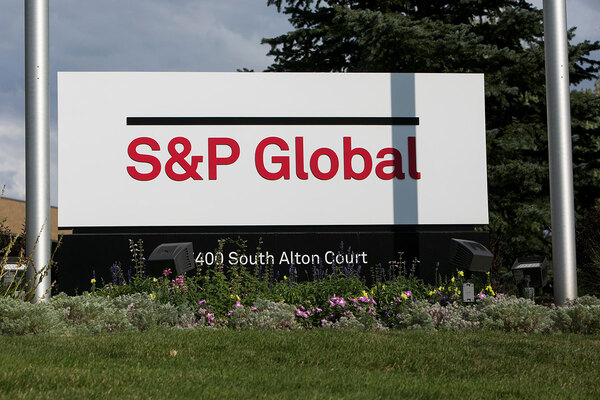You are viewing 1 of your 1 free articles
For-profit partnerships offer a path through current housing challenges
While housing associations continue to face financial pressure, partnership models will be key to maintaining new housing supply, write Helen Collins and Melissa Madjitey
Housing providers face some of the toughest trading conditions of any time in the past two decades. For proof, look no further than the Regulator of Social Housing’s recent annual value for money report, which showed that average spend per social home is up 14% and interest cover (the amount of cash landlords generate relative to their interest payments) is at its lowest level since 2010.
We have been working with landlords on a wide variety of business planning options to respond to these ongoing challenges. One important area is partnerships. Partnerships between housing associations, developers and local authorities are well established. In recent years, for-profit housing providers (FPRPs) have entered the market bringing new partnership opportunities as they seek to build their portfolios of affordable homes.
Yet as housing starts tumble, buyers for Section 106 become scarce and as investment in existing affordable homes take precedent over new supply, it is crucial that these partnerships increase in scope and scale. So, what are the opportunities being explored?
Housing associations continue to use stock rationalisation to release capital for investment. In the past two years, Savills has acted on 15 individual portfolios comprising more than 7,500 homes that have delivered financial receipts in the region of £750m for our clients. Portfolios of good-quality, mixed-tenure homes continue to attract strong demand and pricing. Buyers will use precious capital to acquire proven, income-producing homes.
The market for rented/mixed-tenure stock continues to be dominated by housing associations. However, FPRPs’ interest and capital availability is growing. Around five FPRPs are active in the tenanted transactions market at present – more are needed and we are confident the FPRP buyer pool will continue to grow. Our pipeline of FPRP registrations remains strong and as referenced in our private capital and affordable housing research in 2023, we predict that FPRPs will grow to have around 113,000 homes by 2028.
“As housing starts tumble, buyers for Section 106 become scarce and as investment in existing affordable homes take precedent over new supply, it is crucial that these partnerships increase in scope and scale”
FPRPs are the key buyers of shared ownership homes. A number of them will acquire mixed tenure. Some longer-established FPRPs are now seeking to trade their homes and we are aware of around five to 10 FPRP disposals – both mixed-tenure and shared ownership sales. This creates opportunities for housing associations to acquire new, stabilised stock in bulk.
There is also growing evidence of stock-retaining local authorities with financial headroom seeking to acquire tenanted stock in their locality.
Portfolios vary, but demand remains strongest for core stock – purpose built, scheme-based homes constructed post-1990. We are seeing some trading of newer properties by housing providers, as part of a strategy to sell new stock to maintain balance sheet capacity for new supply.
While the scale of portfolios of predominantly rented properties has increased to 500 to 1,000 homes, there is a place for smaller lot sizes of 200 to 500 homes to encourage more competitive pricing and respond to capital availability. There is also an increase in the number of single-tenure portfolios, including shared ownership and retirement living. Sales remain driven by geographic, tenure rationalisation, service simplification and post-merger disposals, as well as the requirement to secure capital for wider investment activities.
Overall, capacity and appetite to acquire Section 106 homes has substantially reduced. Demand for stock can still be strong, but on a selective and localised basis. On the other hand, new affordable housing remains the primary focus for FPRPs, including Section 106 where the FPRP can access additional stock funded by grants. But we need more FPRP buyers and housing association-FPRP partnerships to take up more of the new build and Section 106 market.
Despite the wobbles of 2023, the capital is undoubtedly still there – although quantum and timing of availability needs consideration. While housing associations continue to face financial pressure, partnership models will be key to maintaining new housing supply.
Some existing approaches include:
- Investor/FPRP buys development pipeline stock from a housing association. The housing association retains development management and housing management functions but externalises its finance. It also does not own the homes built, or retains ownership of a percentage. This is a great model for keeping development teams active and retaining expertise while the housing association balance sheet is strengthened
- Investor and housing association jointly set up a FPRP to buy housing association development pipeline homes. The housing association provides development expertise and has the option to manage the homes
- Investor enters into a ‘right of first refusal’ framework agreement to directly finance a developer-backed FPRP (saves the investor setting up an FPRP)
Other options to explore might include:
-
Housing association partnering with FPRP to develop or acquire homes at greater scale, with an opportunity to buy out the investor over time
-
Housing provider setting up their own FPRP to own homes and be financed with new sources of capital. This would retain the ultimate interest and influence of the housing provider, but crucially would raise capital for the mainstream balance sheet
-
Setting up other forms of joint venture – site or scheme-specific
If we can get the price and terms right, maybe even selling stock to release funds for retrofit – while retaining management.
As ever, the key drivers and objectives will be critical in determining the structure of any deals. But there is no doubt that clear opportunities remain for housing associations and investors/FPRPs to deepen their partnerships and rise to the challenges facing the housing sector at present.











